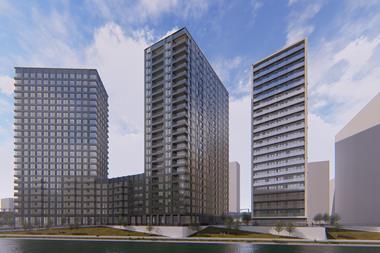In the last quarter of 2020, there was more investment in the build-to-rent (BTR) sector than at any other time and the reported total for the whole year was £4bn, up from £2.7bn year on year, according to a new report from Knight Frank and Homeviews. That’s an extraordinary testament to how the investment community views this sector.

BTR is relatively new to the UK and some great proptech solutions have emerged, but it is a noisy market. There are numerous new entrants and countless new innovative technologies coming to the market. That can make the landscape confusing for a BTR operator. As the industry grapples with tech solutions and the data this yields, the industry must focus on turning the data into actionable insights that drive innovation and smart decision making.
Better data equals better resident experience
To get better data, it is really important to have a data strategy – and that it starts at the very top.
A coordinated data strategy with an emphasis on data quality has to extend across all areas of the business. The challenge is to address the needs of both a single department and the business as a whole. Better technology decisions are made when all departments are involved, or at least a central strategy is communicated and adhered too.
Great data allows BTR operators to focus on differentiation in the eyes of investors and residents, as well as to improve the overall tenant experience. Timely access to data will ensure that property managers understand residents and the volume of touchpoints needed to improve experience. This means that those that live in BTR properties enjoy the best experience and will renew their leases, a fact that is not lost on investors.
Sweetening the data pot
BTR operators are looking at their technology and saying: “Hold on a minute, we’ve built a beautiful building, we focused on leasing and now the investors are requiring more in-depth performance data to help them make better investment decisions. But why can’t we get better data out of our systems?”

They need to see how many enquiries are converting to applications, how many applications are converting to leases, what the average length of the lease is, the cost of acquiring a client, and renewal rates, all of which are operational key performance indicators (KPIs). But how do they measure and collect data about resident engagement and link this to retention and average lease length?
I recently ran an online session about community in BTR and it was agreed that a sense of community is critical to your long-term financial strategy. Make sure your community apps and tools are connected to your core financials so you can start to understand how you are performing against these KPIs quickly.
People are investing in this market for the long term. Sometimes we’re so quick to fix a problem by sticking a plaster on it at the expense of the wider long-term goal. Data can identify where you’ve got a problem and if you can improve that statistic, that’s going to have an impact on the bottom line.
Avoid the blockers to better data
The organisations that use data at the heart of their KPIs are more likely to perform better than their competitors. They benefit from better timeframes to make decisions, stronger analytics and experience fewer errors and less risk.
A recent report from KPMG titled ‘Better Data Better Decisions’ looked at the blockers to a great data strategy. The most common blocker to great data is lack of technology integration. Disparate systems will slow down the ingestion of data.
Great data allows BTR operators to focus on differentiation in the eyes of investors and residents, as well as to improve the overall tenant experience
Investors want to understand the performance and KPIs for BTR. They want to collect as much information about what is happening in those developments. The challenge for property managers is that they may be operating on behalf of multiple investors, so real consideration needs to be given about how data is shared between investors and operators. As the sector matures, it is not uncommon for investors to insist that property managers operate on the investor’s system in a secure and controlled way.
BTR operators need to work on how to get data into a single repository, making it as simple and cost-effective as possible, and increasingly on how to analyse data. I anticipate that we will see the role of data scientist or business analyst become more critical in BTR operators.
However, it is still critical to have an integrated systems approach. The way to overcome this is to limit the number of sources that data is coming from. I recently spoke to an operator who had over 40 different systems! While this is extreme, it is not uncommon for operators to be running between 10 and 15 different systems. The cost of ownership increases exponentially. An integrated approach will reduce your total cost of technology ownership and will increase access to data and be a long-term platform for growth.
This all comes back to data strategy. A coordinated data strategy and an integrated systems approach will provide a platform for growth and will ultimately make that bottom line a lot sweeter.

About Yardi
Yardi develops and supports industry-leading investment and property management software for all types and sizes of real estate companies. Established in 1984, Yardi is based in Santa Barbara, California, and services clients worldwide from offices in the UK, Europe, Australia, Asia, the Middle East and North America.
For more information, visit yardi.co.uk.
Spring is in the air
- 1
- 2
 Currently reading
Currently readingProptech solutions drive data-based BTR strategies
- 3
































No comments yet